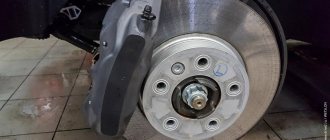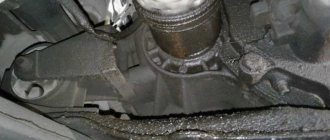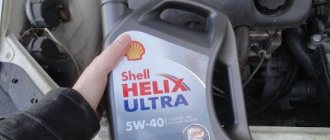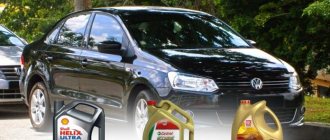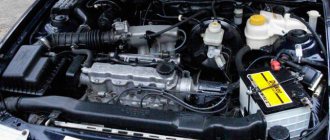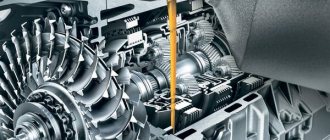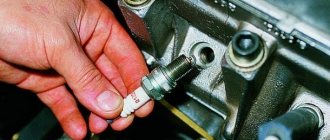As a rule, every car enthusiast knows that a car engine contains motor oil, which is necessary to lubricate the rubbing parts. At the same time, not everyone understands what other important tasks oil performs besides lubrication. Also, many car owners find it difficult to answer why they need to change the engine oil strictly according to the regulations or even ahead of schedule.
Next we will talk about how engine oil affects the operation of the internal combustion engine and why you need to change the engine oil. The question of when to change the engine oil and why it is optimal to carry out such a lubricant change taking into account certain conditions, factors and features will also be considered.
Main functions of motor oil
So, at the early stage of engine development, lubricating fluid was necessary to lubricate the crankshaft journals, as well as to remove wear products and excess heat into the crankcase of the power unit. Subsequently, oil was also supplied to the timing belt, and cylinder lubrication was also implemented.
In modern engines, motor oil is actually the hydraulic fluid for all components and mechanisms inside the internal combustion engine. The answer to the question of why an engine needs motor oil is quite simple. The lubricating fluid protects parts and rubbing surfaces from dry friction, forming a stable oil film on them. However, that's not all. This film creates protection against rust and also minimizes the impact on parts of various chemically active components that inevitably form during engine operation.
It turns out that the basic functions of modern motor oil are as follows:
- protection of parts from dry friction and premature wear;
- reduction of friction losses, energy saving;
- protection against corrosion;
- cooling of rubbing surfaces, protection against overheating;
- removal of mechanical wear products (metal shavings) from friction zones;
- neutralization of chemically active compounds, removal of soot, soot, and other products that are formed after burning fuel in cylinders.
Oil filter
Do not forget that in addition to the oil there is also an oil filter; it increases the oil change period, since some of the unwanted products for the engine accumulate in it, so there is no point in changing the oil without replacing the oil filter. All the dirt from the old oil filter will get into the new oil and the new oil will immediately lose its effectiveness. To rinse or not to rinse?
Many people wonder whether it is worth flushing the oil system before adding new oil. It all depends on the situation. If the car has been in your hands for a long time and you have always changed the oil on time, and only filled in high-quality oil and only from one brand, then flushing is not necessary. If you bought a car second-hand and don’t know what was previously poured into the engine or, for example, you started changing the oil and something black came out of the engine, only slightly similar to oil, then it is better to flush the oil system. Now there are a huge number of flushing additives and oils on the automotive market, but it will be better if you buy not one canister of oil that you are going to pour into the engine, but two. Change the engine oil, let it run and change the engine oil again. Here, of course, it’s up to you to decide how to flush the oil system.
Types and types of motor oils
First of all, any engine oil consists of a base oil base and a package of special additives that are added to such a base. Additives are responsible for the stability of the oil film and oil viscosity (viscosity additives), cleaning of engine parts (detergent additives), etc. It is thanks to such additives that the lubricating fluid receives many unique properties and characteristics.
However, the oil base itself also plays an important role, depending on which oils are divided into:
- mineral;
- semi-synthetic;
- synthetic;
Mineral motor oils are “natural” because they are made from petroleum. Such lubricants are the easiest to produce and affordable. However, these products have the highest viscosity at low temperatures (mineral oil becomes very thick in cold conditions), burn out during engine operation, and oxidize and age faster than others.
In practice, this means that they need to be changed more often than semi-synthetics or synthetics. Often, such lubricating fluids are used in engines with high mileage, since the increased viscosity of the “mineral water” makes it possible to form a thicker oil film and somewhat compensate for the gaps between parts that have increased due to wear. As a result, the engine runs quieter, shock loads are reduced, etc.
- Synthetic motor oils are low-viscosity and are divided into PAO synthetics and hydrocracking. The first option is the highest quality and most expensive product; this oil is not made from pure oil; the manufacturing technology is complex and labor-intensive.
Hydrocracking (HC) is slightly inferior in quality, but this product is noticeably cheaper to produce. In a nutshell, hydrocracking oil is a petroleum base, which, through special processing, is brought as close as possible to PAO oils in properties.
Synthetic products have stable viscosity at both low and high temperatures and have an extended service life. The lubricant retains its fluidity and forms a stable film, as a result the engine is reliably protected in all conditions (both during a cold start and after reaching operating temperatures).
- As for semi-synthetic oil, such a product is actually a mixture of two bases. In other words, 30-50% of expensive synthetics is added to the mineral base.
The finished product has better properties than mineral water and is cheaper than pure synthetics, representing a balanced solution in terms of quality and price.
Let us also add that today there is practically no concept of “winter” and “summer” motor oil, since all products are all-season. In other words, if previously the driver was forced to change the oil according to the season, separately filling in “thin” low-viscosity oils for the winter to facilitate cold starts and “thicker” lubricants for the summer to improve engine protection at high temperatures, modern motor oils are suitable for year-round use.
We also recommend reading the article about the difference between 5w30 and 5w40 oil and which one is better. From this article you will learn about the main differences between motor oils with these viscosity indices, as well as in which cases it is preferable to use one or another option.
It is also worth highlighting that motor oil in the range of various manufacturers is increasingly positioned not only as an all-season product, but also as a universal one. A universal motor oil means that it can be used equally in both petrol and diesel engines. Gasoline/diesel or diesel/gasoline oil allows you to simplify the maintenance of vehicle fleets, eliminating the need to separately purchase lubricants for different types of engines.
Color and viscosity
First of all, the condition of the oil is assessed by transparency, smell and color, as well as fluidity. It is important to check how a drop of oil flows from the dipstick. If the lubricant leaves without stopping, like water, this should alert you.
Normal behavior is different. The drop should freeze, gather, hold out for about 5-7 seconds and then fall down. This means that the viscosity remains normal.
The oil should not be completely black, but rather a light yellowish-brown color of motor oil. The lighter and more uniform this spot is, the better the condition of the engine oil.
Blackness of the oil indicates high contamination of the engine with fuel combustion products. The lubricating fluid washes away these deposits and carries them in the form of a fine suspension. In addition, the oil turns black when the engine overheats in traffic jams.
How to check oil quality yourself
You can monitor the performance of the oil yourself “by eye”.
However, a more qualified assessment of the lubricating fluid can only be given in a special laboratory. There is a common misconception - if the oil turns black, it means it’s time to change it. However, this is completely the wrong guideline. Moreover, it works the other way around: high-quality motor oil has detergent and dispersant properties. It cleans the engine of combustion products and dirt, and holds this debris in its own volume in a finely dispersed state, preventing blockages in the oil system. If you have driven 1–2 thousand kilometers and the oil remains clean, this is an alarming signal.
Non-blackened oil is a sign that the lubricant does not perform cleaning functions. Dirt accumulates on engine parts, forms plugs in the oil channels, which ultimately leads to wear and tear of the engine.
In addition, the oil may thicken or, conversely, become too liquid. In the first case, you have to constantly worry whether the car will start on a cold morning and change batteries; in the second, you have to add oil due to increased waste. If the oil loses stability too quickly, the reason lies in low-quality ingredients - base oils and additives. There is only one way out here - to choose a higher quality lubricant from a reliable brand, with confidence in the originality of the product.
The surest way to get a professional opinion on the quality of the oil you use is to contact a specialized laboratory. However, experienced drivers know several life hacks on how to check the performance of the lubricant themselves:
- Inspect the oil dipstick and oil fill cap. The appearance of dark clots in the oil is a signal to urgently replace it.
- Pay attention to the color of the oil. If it does not darken during operation, the additives do not cope with cleaning the engine from dirt.
- Inspect the cap and the inside of the oil filler neck for the presence of foam - this is a sign that antifreeze is getting into the lubricant.
- Pay attention to the consistency of the oil - if thick deposits similar to grease are noticeable, urgent measures must be taken.
Any of these signs is a good reason not only for changing the oil, but also for diagnosing the condition of the internal combustion engine at a professional service station.
A more thorough check of the oil can be done using a drop test. We told and showed how to do this here.
What will happen to the engine if you do not change the oil on time?
If you changed the oil 1-2 thousand km later than necessary, then it’s okay, but if, say, 5,000 km later, then this can lead to very disastrous consequences in the future. Here are photographs of the engines, on one engine the oil was always changed on time and only high-quality oil was filled, and on the second engine cheap mineral oil was poured, and it was not changed at all.
Here is a table of motor oils that will help you select the oil viscosity for the temperatures prevailing in your region:
Engine oil table
Additives
In fact, the properties of motor oils are ensured by a complex of additives. The base base of any liquid lubricant is only 70-95% of the total volume of the canister; the remaining volume is achieved through various additives.
The use of additives provides not only viscosity and operational stability. Additives help minimize the formation of sludge and carbon deposits, as well as minimize possible damage when such deposits get into the engine channels and rubbing vapors.
Key5 ingredients affecting the quality of the lubricating fluid:
- Viscosity Control Additives
- Detergent additives for flushing the system and removing wear debris
- corrosion inhibitors - protection against corrosion of metal products
- anti-wear components - for example, zinc additives required to provide solid lubrication of rubbing pairs when an oil stain drains
- friction modifiers designed to reduce fuel consumption by reducing the friction coefficient of pairs (for example, graphite, molybdenum)
- anticoagulating additives that prevent the formation of paraffin solid compounds at low temperatures.
- foam inhibitors that dampen foam formation that occurs due to the crankshaft churning fluid in the engine crankcase.
Oil Standards
The main properties of motor oils are described in the applicable standards. Motor oil standards use viscosity as the main parameter determining lubricating properties. To standardize understanding and for the convenience of the end consumer, they are mainly labeled according to the SAE system. The coding according to this standard indicates the minimum and maximum preferred outside air temperatures when starting the engine.
Seasonal motor oils are rarely used by car owners during normal vehicle operation, with the exception of work in arctic cold or desert heat. Basically, for year-round use and to reduce the cost of technical operation of a vehicle, all-season (universal) lubricants are used, coded XwXX according to the SAE standard.
The first index indicates the properties of motor oils in relation to the optimal temperature for starting in winter conditions. The first index varies from 0w to 20w. The second index indicates the temperature characteristics of engine starting in summer and varies from 30 to 60. The most universal lubricant can be called the one coded SAE 0W60. Such motor oil for cars exists. Its characteristics require engine operation at temperatures from −40C to +60C.
During normal operation of the SAE0W60 engine, its characteristics far exceed the requirements set according to the climatic characteristics of the region in which the engine is operated. Basically, this viscosity more indicates the possibility of using the lubricant in highly loaded, highly accelerated engines. Mainly used in racing environments.
For normal operation, a viscosity of 10W50 is sufficient, which will cover all temperature charts and allow you to safely travel, without fear for the safety of the engine, in almost all latitudes.
There are industry standards for lubricants according to European ACEA standards, according to the international ISO classification, according to the requirements of the American Petroleum Institute - API, according to Japanese - ILSAC, and, of course, according to GOST of the Russian Federation.
All applied standards are interchangeable and overlap the indicators for the main characteristics. Standards differ in gradation and designation.
The API uses a two-letter code and is based on the year of development of the internal combustion engine. For example, API SM - for engines developed in 2004 and younger
ACEA uses an alphanumeric code and categorizes petrochemical products by engine type, operating mode, and durability of the fluid itself. For example, ACEA A3/B3 - for high-performance gasoline and diesel internal combustion engines, for light commercial vehicles and passenger cars. Operation with extended shift intervals is possible.
ISO divides the lubricant on a base basis. For example, ISO 11158 HH - natural mineral liquids.
ILSAC - two letters and a hyphenated number. Indicates compliance with API classification, and characterizes by viscosity, shear rate, volatility, foaming. The GF-5 standard is now in effect, corresponding to API SM
GOST 2004 completely coincides with the API designation. The designation according to the old GOST indicates the viscosity of the lubricant at startup. The designation 6z16 corresponds to 5w40.
On which engine should the level be checked - cold or hot?
On cool! That is, the one that stood for a while after work. The meaning is simple: you need the oil to have time to drain from the upper parts into the oil pan, where its level can be determined using a dipstick. You need to wait at least ten minutes, otherwise the measurement will be biased: a significant part of the oil simply will not have time to return from the lines to the crankcase. In this case, the car should stand as level as possible. You should pull out the oil dipstick, wipe it with a rag, then put it back in and take it out again.
I wonder if every driver today knows about the existence of such a dipstick?
I wonder if every driver today knows about the existence of such a dipstick?
What are gaps in friction pairs and why are they needed?
To begin with, a rhetorical question: are the diameter of the piston (complete with rings) and the inner diameter of the cylinder the same? Of course not! In order for the piston to make translational movements in the cylinder hundreds of times per minute, its diameter simply must be slightly smaller, otherwise friction will instantly heat both members of our friction pair under investigation to temperatures at which they will collapse.
So, there is a difference in diameters (gap), the question is: how big is this gap, what is it filled with and what does it affect? Based on the principle of operation of an internal combustion engine (ICE), it is this gap that ultimately determines the efficiency of the motor (efficiency), because it is through this gap that the pushing force of the explosion of the fuel mixture in the cylinder “leaks”. So it turns out that the smaller the gap, the greater the power?
Variety of automobile oils
On the other hand, as already mentioned, a gap (even minimal) is still necessary, in addition, like any other friction pair, our pair also necessarily needs constant lubrication. Therefore, the main task of the designers is to make this gap exactly correspond to the oil film created by motor oil, which has such a property as viscosity. In this case, the engine power will be the maximum possible (all other things being equal) for its design.
This is where the problems begin. Why? Yes, because oil viscosity is a variable value that significantly depends on temperature in inverse proportion. For example, for a standard 5W-40 oil, when the engine warms up, say from 40 to 100°C, the actual viscosity drops from about 90 to 14 mm2/s, i.e. more than 6 times! And the viscosity does not drop all at once, but gradually, along a curve. And each oil has its own curve. Accordingly, if the oil temperature is below 40, the viscosity will be even higher, if above 100, the viscosity will be even lower. Obviously, along with the viscosity value, the thickness of the film on the friction pairs also changes.
Other oils for filling into automobile engines in emergency conditions
In case of emergency and it is not possible to fill the recommended lubricant, short-term use of liquid lubricants used for marine and diesel engines, aviation and even turbine oils is possible.
The use of non-recommended types of oils is possible only in emergency situations when it is impossible to tow the car or the towing service is unavailable. An emergency mileage of no more than 50 km is possible with mandatory flushing of the lubrication channels before changing the oil.
After filling with oils not intended for use in automobile internal combustion engines, it is necessary to replace sealing rubber products, since additives in industrial and industrial oils destroy the structure of the material. As an addition, after operation with different oils, it is recommended to perform a partial overhaul of the engine with defective crankshaft journals.
Didn't find the information you are looking for? on our forum.
